SS-14: Color is Culture
How translating colors across cultures can help you make a positive impact.
In our globalized workplaces, we often encounter colleagues and clients from diverse backgrounds and cultures. Building connections and grabbing attention can sometimes be challenging.
One subtle yet effective means of achieving attention and connection is through a powerful communication tool: the language of color. Color speaks a universal language that can captivate our senses and bridge our differences. When we wear hues in our attire, we do more than just fabric; we do expressions of our identities and invitations for connection.
Our relationship with color begins in infancy, as we first perceive the vibrant spectrum that paints our world. As babies, we discern brightness and intensity, gradually seeing the nuances of reds, blues, and yellows. By four months, we're immersed in a kaleidoscope of hues, each carrying its own emotive charge.
Yet, as we navigate the globe, we discover that color's narrative shifts from one culture to another. What evokes joy in one corner of the world might symbolize mourning in another. Thus, understanding the diverse meanings attached to colors becomes imperative for seamless cross-cultural communication.
Let's examine the meanings of the primary colors yellow, blue, and red worldwide. This way, the next time you pick out an outfit, you'll know how to make the impression you want, no matter where you are.
YELLOW
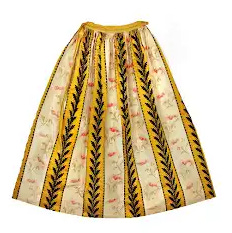







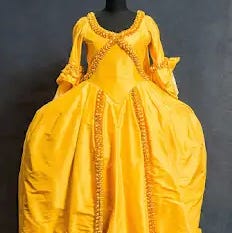
Yellow is known to be the happiest color psychologically. It often boosts energy levels and alleviates feelings of depression. It stimulates mental processes and activates the nervous system, enhancing memory and encouraging communication.
Across different regions:
North America: Yellow holds significance for three Native American nations - the Navajo, Apache, and Iowa - symbolizing wealth and prosperity due to its association with gold and corn.
Europe: In France, yellow traditionally conveys jealousy, betrayal, weakness, and contradiction, with historical instances of painting the doors of traitors and criminals yellow. Similarly, in Germany, yellow symbolizes jealousy.
Asia: In China, yellow is linked with pornography, with the term "yellow book" referring to any pornographic media. In Japan, yellow represents bravery, wealth, and refinement. Thailand regards yellow as the lucky color for Monday, honoring the King of Thailand. For Hindus, yellow holds sacred significance, representing knowledge and learning.
Africa: Yellow is a color reserved for individuals of high rank across many African nations due to its resemblance to gold, symbolizing wealth, quality, and success. In Egypt, yellow is associated with gold, often used to adorn mummies and tombs, symbolizing mourning and the journey to the afterlife.
BLUE







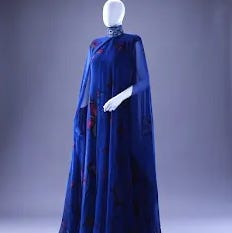

Blue is a relative of black, meaning it has advantages and disadvantages. On the one hand, blue is the color of tranquility, trust, responsibility, dedication, and bravery. It gives strength and has a healing effect.
It's believed that if a person's favorite color is blue, she is reasonable and knows how to keep herself in hand. Such people never lose their selves; they willingly compromise and easily share with others.
But blue has a downside. So, according to psychologists, fans of blue can be prone to depression, melancholy, and isolation.
Across different regions:
America Blue is seen as calm and tranquil and signifies a trustworthy person or official business. It is commonly associated with masculinity and projects authority, loyalty, and security. For this reason, many banks use it, and it has become the standard for police uniforms.
Western European countries: Blue represents truth, serenity, reliability, responsibility, and fidelity, so the United Nations and the European Union flags are blue.
Latin America: with its strong Catholic population, blue is also associated with religion because it is the color of the Virgin Mary's mantle. However, it can also be associated with mourning.
Asia: Blue is tied to immortality, spirituality, and heaven. In India, it represents truth, mercy, and love.
Africa: In Nigerian indigenous cultures, blue is the color of love. Before a king ascends the throne, he often wears royal indigo blue. In Northern Nigeria, the color is also used for the chief or the king.
RED






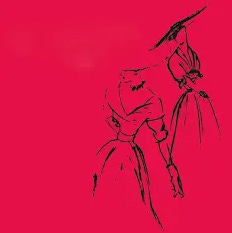

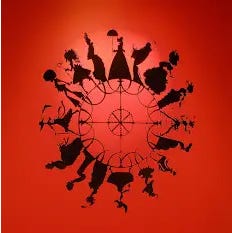
Did you know that red is the first color humans perceive, after black and white? It's the color that babies see first before any other and the first that those suffering from temporary color blindness after a brain injury start to see again.
Red evokes the strongest emotions of any color, representing passion, love, excitement, and desire while also connoting power, strength, danger, and anger.
Across different regions:
America & Europe: In Western countries, red evokes excitement, passion, love, danger, and urgency. When red is combined with green, the color scheme becomes festive—the traditional colors of Christmas. In Latin American countries, red can have religious connotations when combined with white.
Africa: Red symbolizes death and grief in African cultures. In Nigeria and South Africa, red symbolizes violence and sacrifice. The flag of South Africa has red in it to symbolize the violence during its fight for freedom.
Asia: Red holds various cultural associations. In India, it signifies purity, while in China, it symbolizes luck and happiness, explaining its everyday use in Chinese restaurants in the U.S. Additionally, red is prominent during the Chinese New Year celebrations and was historically worn by brides to symbolize joy and fertility on their wedding day.
Middle East: it evokes danger and caution.
In today's diverse workplaces, connecting with others can be challenging. However, understanding the language of color can help bridge cultural gaps and foster meaningful connections.
Colors like yellow, blue, and red hold different meanings across cultures. Yellow symbolizes joy or jealousy, blue conveys trust or melancholy, and red evokes passion or danger, depending on where you are.
Recognizing these cultural nuances allows us to communicate more effectively and build stronger relationships, regardless of background. In embracing the universal language of color, we pave the way for deeper understanding and connection in our globalized society.
As a stylist and image consultant, I work with senior-level professional women—directors, executives, partners, and c-suite leaders—to elevate their style and professional brand. By tapping into my expertise, clients enhance their authority, amplify their advocacy, and propel their career trajectory, leaving a lasting impression. Visit www.susanaperczekstyling.com for more details.




